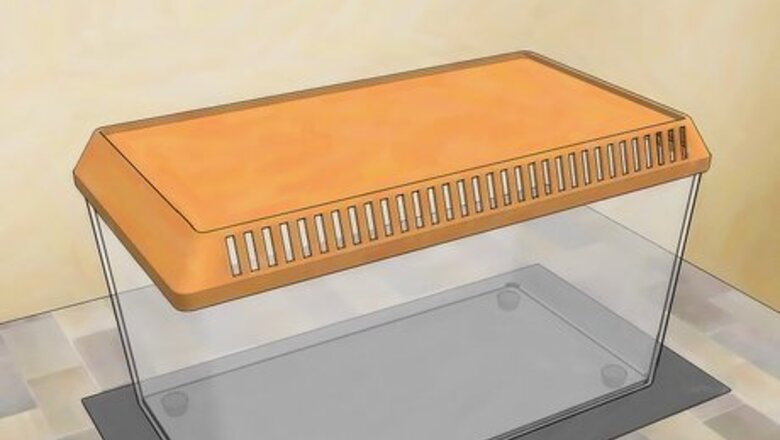
views
Finding the Right Habitat for Your Centipede
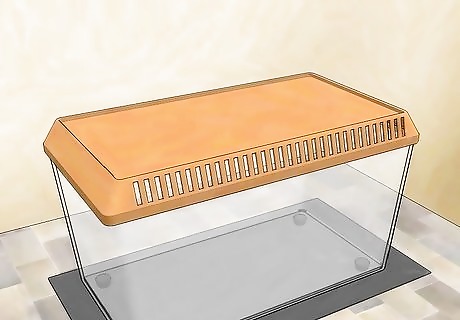
Find a safe and comfortable habitat. Centipedes are very strong and can sneak through small spaces, so it's important to find a habitat that is difficult to escape from. An aquarium or a large plastic container with a heavily secured top could. An aquarium can be a great place for your centipede. For a large centipede, choose a 20-gallon tank, and a 10-gallon tank for a small one. In both cases, make sure you have a screen lid with securing clips. You can also use a large plastic container to house your centipede. A 9-10-inch plastic tub with a secured lid and perforated top could work. However, be warned that it is possible for centipedes to chew through these tubs.
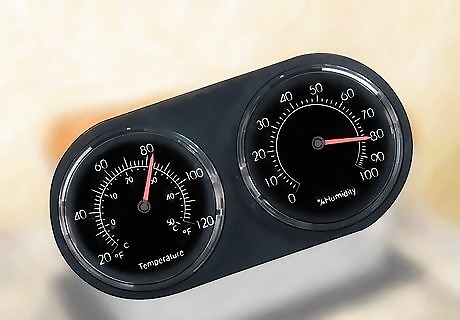
Keep your centipede at a reasonable temperature. Most centipedes can be kept at a safe temperature of roughly 80 degrees or higher. Additionally, centipedes need a humid environment of roughly 75%-85% humidity. You can use a heating pad, night bulbs or ceramic heaters to make sure their habitat is warm enough. You should also worry about keeping the humidity up for your centipede, however, since each of these methods could dry out your cage. You can use a dish filled with water to keep their habitat humid enough. It will need to be regularly filled to maintain proper humidity.
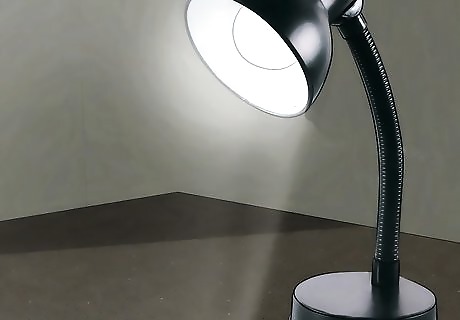
Light your centipede's habitat to suit its nocturnal state. Centipedes are nocturnal creatures, so they do not require special lighting. If you want to observe the centipede during the evening, you can get a nocturnal light, like those used for amphibians. Your centipede's habitat should not be brightly lit. During the evening hours, their cage should be kept in a dimly lit area. To observe your centipede during the evening, get a nocturnal light that gives off heat without much light. You can see the centipede, but it will still think it's night in the habitat.
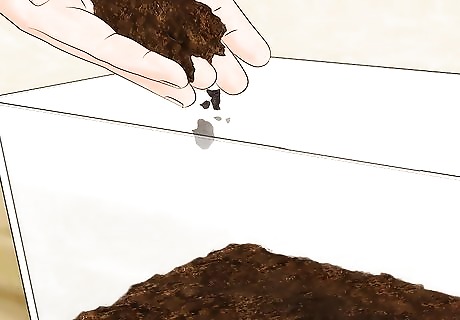
Provide healthy substrate for your centipede. Centipedes like to burrow during the day. It's important to have substrate that is deep enough for your centipede to burrow underneath. The substrate should be at least as deep as the centipede’s length. They prefer to be hidden away during the daytime hours. You can use a variety of materials for your substrate. It should be able to retain moisture and tolerate the centipede's burrowing. You can potting compost, peat moss, or soil for the substrate. Peat moss is the best since it prevents mold growth due to the habitat's high humidity.
Feeding Your Centipede
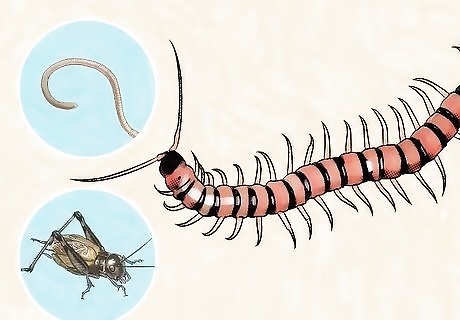
Feed your centipede properly. Centipedes like to eat live prey. Keep a regular supply of different live creatures for your pet centipede. They are fascinating to watch, since they are very quick and assertive when hunting. Feed your centipede at least twice a day. If there is any food left in their habitat after feeding, remove it with forceps from the habitat. Your centipede can be injured if it has to fight its prey. Don't give your centipede any live animals bigger than half the size of the centipede.
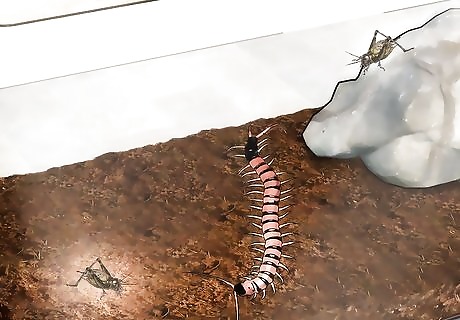
Feed your centipede insects. Smaller centipedes eat small insects, including fruit flies, carpet beetle larvae, and small crickets. As your centipede gets larger, you can give them cockroaches, adult crickets, and silverfish. Your centipede needs to be able to safely hunt live prey. Insects give to the centipede should be smaller than your centipede. Do not feed your pet centipede wild insects. Wild insects could have been in contact with pesticides that could be lethal to your centipede. Purchase small insects at a local feed or pet store.
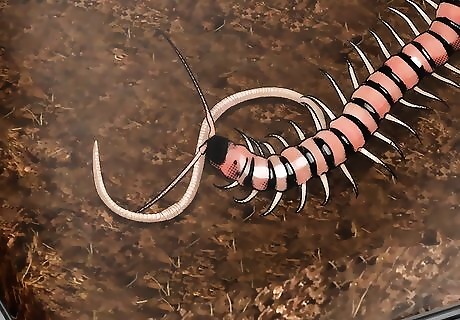
Give your centipedes soft-bodied prey. Earthworms, slugs, and snails can work as live prey for your centipede. Be careful that the soft-bodied prey has not been exposed to harmful chemicals. Centipedes should be able to handle soft-bodied prey easily. Only the smallest centipedes could have problems hunting an earthworm. Buy soft-bodied prey at a feed or pet store. You can usually get earthworms at a local fishing or tackle shop.
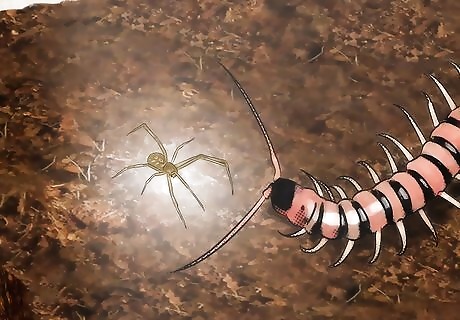
Provide your centipede with arachnids. Centipedes love to feed on live prey, and arachnids (spiders) are a favorite treat. Your centipede will use its venom to paralyze the spider before feeding on it. Be sure any arachnid you provide your centipede is not venomous. Venomous spiders may hurt or even kill centipedes.
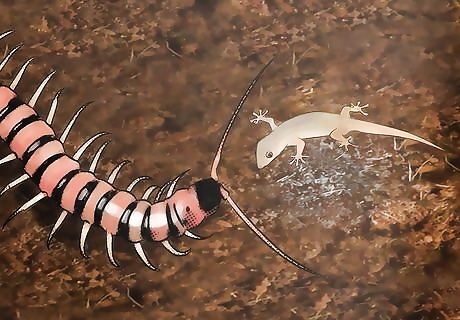
Feed your centipede small animals. Very large centipedes can eat small animals, including mice, lizards, frogs, birds, snakes, or bats. Mice and frogs may be easiest to find and feed your centipede. Use lizards and rats for a very large centipede. They should be able to use their venom to safely neutralize these animals and eat them. Your centipede may not eat all prey. If it sits for 24 hours without being eaten, get rid of it to avoid rotting.
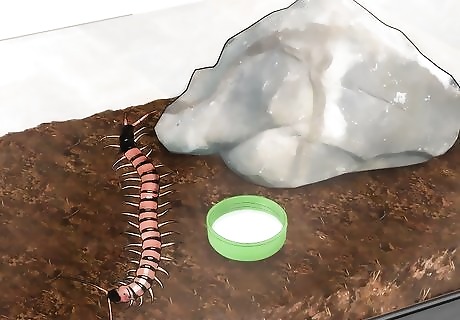
Have water available for your pet centipede. Water provides centipedes with the right amount of humidity. It can be used by the centipede to stay hydrated. The water may come from a water dish or from everyday misting. Centipedes get most of their water from their food. However, a water dish is necessary to maintain the proper humidity level in their habitat. Use enough water to keep your centipede from drying out. When they dry out, it is usually caused by loss of moisture through the spiracle openings.
Being Cautious with Your Centipede

Be careful when handling your centipede. Handle it so with thick gloves and tools used for manipulating snakes. Avoid handling it unless absolutely necessary. Centipede venom is not deadly to humans, but it can cause many problems, including fever, dizziness, and difficulty breathing. Additionally, their venom can also cause allergic reactions. Use protective gloves if you must handle your centipede. Centipedes can be deceptively quick, so make sure your gloves cover enough of your arms as well.
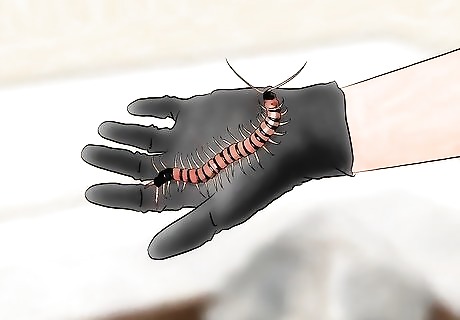
Hold your centipede gently to avoid injuring it. Centipede's bodies can be sensitive to being handled. Be careful to not squeeze it too hard or allow it to fall out of your hands. Maintain a gentle, yet firm grip on your centipede. You want to be careful not to injure it, but you keep control of its movements. Also look where the centipede is going at all times to make sure it does not bite you and harm you

Put it back in its habitat if your centipede is moving a lot. You can try to handle your centipede again when it has calmed down.
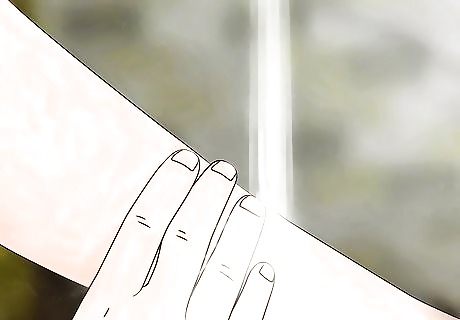
Treat centipede bites if they happen. Centipede bites are not usually fatal, but can be very painful. Ice them immediately to keep down the swelling. If necessary, consult a doctor. Centipede bites consist of two puncture wounds with redness and swelling. They may occasionally cause headaches or dizziness as well. Wash out your centipede bite with warm water and soap. Ice the bite or use analgesic gel if the area is swollen. If the bitten area does not stop hurting after a day or so, consult a doctor. See a doctor immediately if you have any other symptoms, including rapid heartbeat or a fever. You may be having an allergic reaction.
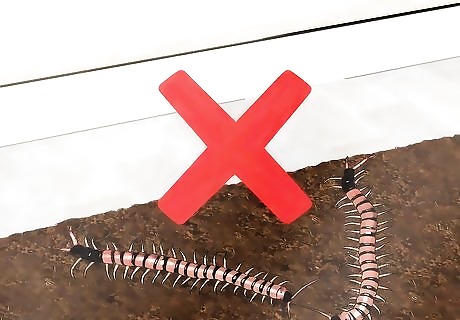
Don't put multiple centipedes in together. Centipedes do not do well with other centipedes in captivity. If you want to have multiple centipedes as pets, keep them in separate habitats.




















Comments
0 comment